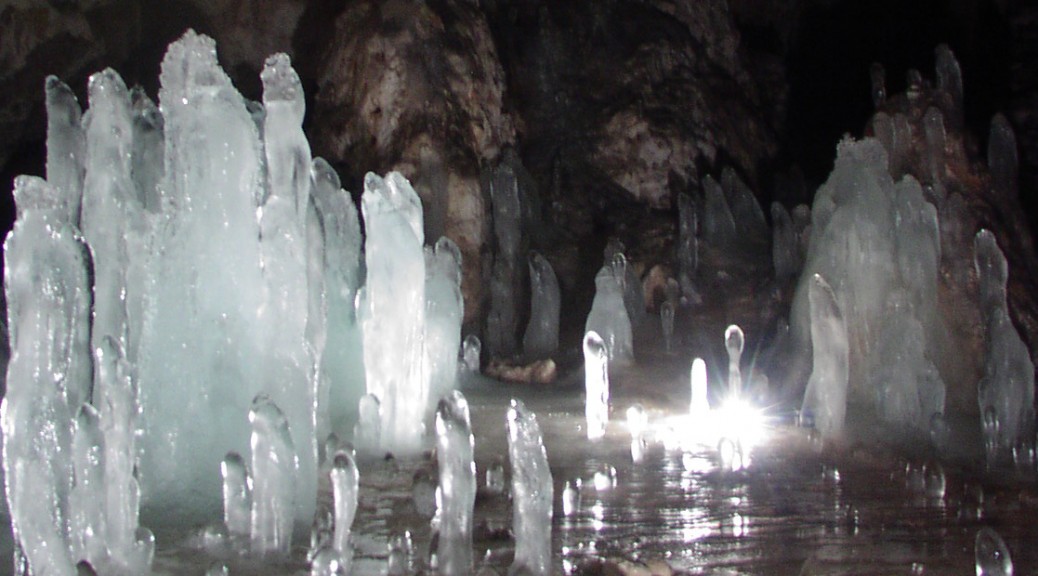On a recent visit to Crystal Ice Cave in Idaho, climate and cave researchers had to wade through frigid, knee-deep water to reach the ice formations that give the cave its name. Cavers are good-humored about the hardships of underground exploration, but this water was chilling for more than one reason: it was carrying away some of the very clues they had come to study.
Ice is an invaluable source of information about the earth’s past. Pollen trapped in ice from polar ice caps and mountaintop glaciers documents plant life up to 1.5 million years ago, and gas bubbles and water isotopes reveal glimpses of ancient temperatures.
Polar ice samples cannot necessarily reveal what the climate was like in, say, New Mexico or other temperate regions, however. So a decade ago a small group of researchers began meeting to discuss the potential of cave ice, some of which is more than 3,000 years old. Since then, studies have confirmed that cave ice can illuminate some questions about how lower altitudes and latitudes responded to climate swings. But by this summer, when the scientists found themselves wading through the meltwater in Crystal Ice Cave during their biennial workshop, the main question had changed from what the ice could tell them to how to retrieve enough before it disappeared.
Thus far researchers have not won much funding for long-term studies of ice caves. Part of the reason is that obtaining a sample is a massive, expensive effort, requiring intense drilling, helicopters and refrigerated vans. And geochemist Zoltán Kern of the Hungarian Academy of Sciences in Budapest notes that he understands funders’ qualms because scientists have not yet figured out how to convert complicated cave ice data into tidy climate records. But this much is clear, says George Veni, director of the National Cave and Karst Research Institute in Carlsbad, N.M.: before the ice melts, “the main thing is to try and collect as much of it as possible.”
First published by Scientific American: [html] [html en español] [pdf].
See also my previous feature stories on cave ice in Science Magazine and EARTH Magazine.
